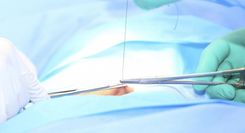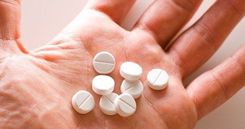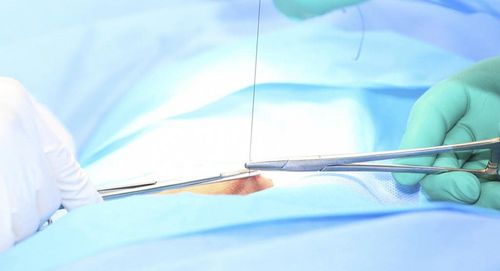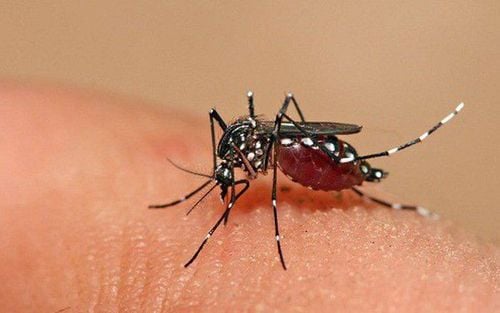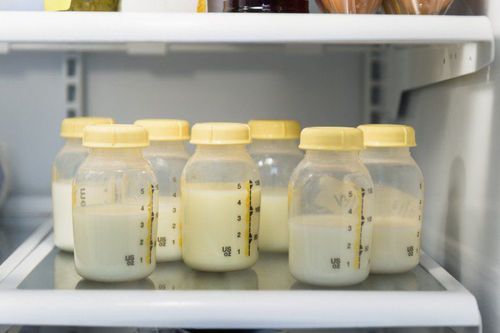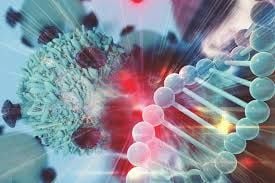Usually, mothers will have milk after 1-3 days after giving birth. However, many mothers who have had a cesarean section often experience a situation where their milk does not come in or comes in later than normal. So what should mothers do if they have had a cesarean section and have no milk?
1. Factors affecting breast milk production after cesarean section
Many mothers who have had a cesarean section often have milk later than mothers who have had a normal birth, because of the following factors:
1.1. Anesthesia or anesthesia
The anesthetic or anesthesia used during a cesarean section can affect the mother's ability to produce milk. In cases where the mother has to use additional anti-inflammatory or anti-infective drugs, these drugs can inhibit milk-producing hormones, making it impossible for you to produce milk immediately after giving birth. In addition, when giving birth by cesarean section, the mother's body often does not go through uterine contractions and labor, so the mammary glands will work more slowly than mothers who have had a normal birth.
1.2. Delayed breastfeeding
Cesarean section causes delayed breastfeeding immediately after birth. This may be due to the effects of medications that require the mother to rest more or one of the mother and child has some problems after the cesarean section and needs to be separated for special care.
At that time, the mother will not have the opportunity to breastfeed immediately after birth, causing the body to temporarily lack milk-secreting hormones, namely prolactin and oxytocin. The lack of these two hormones causes the mammary glands to not be stimulated, leading to slow milk production after the cesarean section.
1.3. Effects from the incision
Pain in the incision or getting used to appropriate breastfeeding positions can make it impossible for the mother to breastfeed soon after birth. In addition, pain after a cesarean section can cause the mother to lose sleep, have difficulty sleeping, and have a poor appetite, leading to a lack of nutrients. This is an indirect cause that affects the body's milk production process.
1.4. Psychological effects after cesarean section
Cesarean section is often not the desired choice of many mothers or in some cases, the mother is assigned to have an unexpected cesarean section without prior preparation, which will affect the psychology after giving birth. Some mothers may feel disappointed, worried and sad,... after the cesarean section. This can affect breastfeeding.
2. What should a mother do if she has no milk after a cesarean section?
No milk after a cesarean section is a problem that many mothers have. If this happens, mothers should refer to the following measures:
2.1. Start breastfeeding as soon as possible after giving birth
One of the most effective measures if a mother has no milk after 3 days of cesarean section is to breastfeed as soon as possible. If an epidural or spinal anesthesia is used, the mother can still be conscious and breastfeed soon after giving birth. In cases of general anesthesia, although the recovery process will take longer, the pregnant woman can also request skin-to-skin contact with the baby as soon as she regains consciousness. Then, wait for the baby to start breastfeeding naturally.
Applying skin-to-skin contact and early breastfeeding will help the mother and baby become closer emotionally. This helps stimulate the activity of milk-secreting hormones and help the mother's milk gradually increase.
2.2. Using a breast pump
Cesarean section often prevents the mother from having the opportunity to breastfeed immediately after birth, especially in cases where the mother and baby have to be separated or the baby cannot breastfeed immediately. At this time, to help the mother produce milk as quickly as possible, using a breast pump or manual breast pump is necessary within 1-2 hours after birth. Pumping milk every 3-4 hours will help prevent breast engorgement while helping mothers absorb colostrum and provide it to their babies as soon as they can breastfeed.
2.3. Use pain relievers
After a cesarean section, mothers often feel more pain from the incision and feel uncomfortable when breastfeeding. This indirectly affects both mother and baby. Therefore, you can consult your doctor about using pain relievers after a cesarean section that are suitable for breastfeeding women. Using pain relievers will help you feel more comfortable and help your body focus on producing breast milk.
In summary, a cesarean section is one of the interventions in childbirth that greatly affects the mother's health, especially the late milk production compared to normal birth. However, mothers do not need to worry too much if they have no milk or milk comes late after a cesarean section. Mothers can apply some measures such as breastfeeding, using a breast pump, etc. If you have difficulty breastfeeding or slow milk production, you can seek support from experts for more effective advice.
To arrange an appointment, please call HOTLINE or make your reservation directly HERE. You may also download the MyVinmec app to schedule appointments faster and manage your reservations more conveniently.
